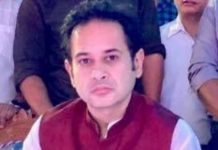[cycloneslider id=”tenders”]
WHAT DO you say of a campaign in which pain became the only impetus? What do you say of the middle-class fight in which memories became the mainstay, the moving force? Really, what do you say of a tragedy in which the dead kept the living going? What do you tell ML Sehgal, a father who lost his 21-year-old son Vikas, on a day that he waited for him at home so he could cut his own birthday cake? What can the Sehgal family possibly do on June 13? Mourn the fact that they found Vikas’s body in the burns ward of a Delhi hospital or keep life going? What do you tell Harish Dang, a South Delhi businessman who lost five members in the Uphaar tragedy, including his wife and son? What can you say to the Sidhus and the Manns who cremated their wives and children at one go? What words would you choose to calm Neelam and Shekhar Krishnamoorthy who enter a dark, empty house every single day? How do you console Rita Sawhney, who lost her daughter at age 20? The Sehgals, Sidhus, Sawhneys and Krishnamoorthys decided to help themselves.
None of the 28 families who had lost 59 members in all — 23 below the age of 15 — in the Uphaar fire on June 13, 1997 were willing to accept the tragedy as something that was “destined”. Vikas’s body was found in the burns ward but there was not a mark on it. Neelam had found her daughter Unnati lying on a stretcher at Delhi’s premier All India Institute of Medical Sciences. She looked like she was asleep, but for a torn earlobe. Someone had moved stretcher to stretcher, yanking jewellery off the dead.
Fifty-nine young lives were snuffed out on June 13, 1997, while they watched a Hindi film in Uphaar, a theatre owned by the Ansals, real estate magnates, who never once uttered the word remorse. The callousness, the heartlessness displayed by the theatre management, in fact, spurred the victims to galvanise themselves into battle. How could the manager have walked away with the cash box after the transformer had caught fire? What about the public address system that should have warned hapless cinemagoers that afternoon? It never came on. It could not have. It was not working. What about the usher who had bolted the only exit from the outside and left duty even before his replacement could come in that day? What about the fire extinguisher? Well, in its place lay a broom. What about all those extra seats that brought in extra bucks but at the cost of human lives? Fate had not dealt the Sidhus and the Sawhneys a bad card. This was a man-made tragedy. This was criminal negligence. Distraught families kept scanning the papers and their suspicions kept getting confirmed, even as they went about the difficult task of cremating the dead. The transformer which caught fire — to deliver a fatal blow this time — had also sparked and resulted in a minor fire at 7am the same day. Linemen from the Delhi Vidyut Board (DVB) had used sand to douse the fire and the cables had been repaired, or so they said. What the engineers from the DVB’s breakdown unit actually did only emerged later.
If 10 years later, powerful real-estate tycoons Sushil and Gopal Ansal find themselves singled out as the only two amongst the mighty to have been sentenced by a court of law, it is because the ordinary got together to push their own destiny. If the three DVB engineers find themselves convicted for culpable homicide, it is because the victims got together and swore justice. Grief and anger can propel in many ways. In this case, it brought together simple, middle and lower income group families to wage a unified battle. A battle that sought to avenge the deaths of the 59 whose future lay ahead of them. Justice has always eluded the common Indian and many a case has fallen by the wayside, but the Uphaar fight has shown how dogged determination can yield results. THE BATTLE, which has today become an inspirational example, started as any ordinary story usually does. The spark came from Neelam Krishnamoorthy, who found herself surrounded by eager, inquisitive members of her and Shekhar’s extended family advising her to have another child. This was on the thirteenth day after she had immersed the ashes of 13-year-old Ujjwal and 17-yearold Unnati.
She had already charted her course. The mother made a promise to her children to punish those responsible for their untimely death. Shekhar by her side, the happy housewife who sometimes lent a helping hand to her husband’s flourishing garment export business, Neelam asked her new family of friends in the media for a lawyers name and number. On June 27, to be precise, she called wellknown lawyer KTS Tulsi who offered to come to her house to meet her. But for someone who had already decided to make resolve a companion, she replied, “No sir, if I have to fight this battle, I have to get out of the house.” So, the two went to meet Tulsi, who agreed but with two pre-conditions: one, that he would not take a penny and two, he would lead their battle only if they could form an association. His advice — you cannot take on a rich and powerful lobby like the Ansals as individuals. For the next three days, the grieving couple scoured the newspapers for obituary columns; called up each family, who readily agreed, and on June 30, 1997 — 17 days after death had visited each of those 28 homes — the families had an umbrella. It was called AVUT — Association for the Victims of the Uphaar Tragedy.
Tulsi gave them another important advice — the Ansals would flex their financial muscle, so no one other than the next of kin would be allowed in as members. Bound by deep sorrow and the determination to see the guilty punished, the one thing that marked AVUT’s 10-yea long battle (it has taken this long to win the case in the lower court) was the fact they stuck together as one big family.
NOT THAT the “enemy” did not try. There were crude attempts to lure victims but they didn’t work. And when the colour of money failed to break the resolve that had been born of grief, they tried intimidation. That did not work either, and as Tulsi put it, “This frustrated the Ansals because they succeeded neither with the subtle nor the blatant.”













